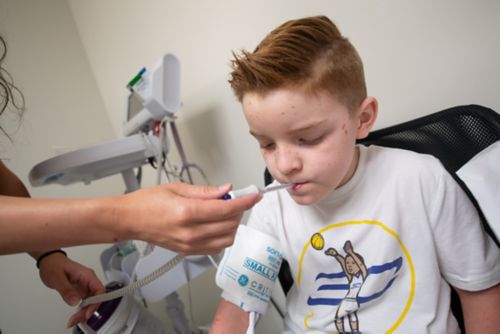A blood culture is a lab test that is used to check for infection in the blood. These infections can be caused by bacteria, viruses, or fungi.
Some patients are at higher risk for life-threatening infections. When patients develop a fever or certain other symptoms of infection, it could be a sign of a serious illness. Health care providers need information about what is causing the symptoms, so the patient can be treated as quickly as possible.
A blood culture will likely be performed to help find the source of the infection.
Blood infections in childhood cancer patients
If your child has cancer or other condition that weakens the immune system, their body is less able to defend itself against germs that cause infections. An infection in the blood is serious and needs to be treated immediately, usually in a hospital. Sepsis is a complication of infection that can be life-threatening, especially in people with weakened immune systems.
Blood cultures are usually performed any time a childhood cancer patient develops a fever. Information from blood cultures may help the doctor decide how to treat the infection and which medicines are likely to be most effective.
How a blood culture works
A blood culture requires samples of blood. Usually at least 2 samples of blood are needed to identify the source of the infection.
- A care team member will insert a needle into your child’s vein to get a blood sample. In some patients, a common source of infection is a venous access device such as a central line, port, or peripherally inserted central catheter (PICC). When patients with a fever have such a device, the care team usually needs to take a blood sample of blood from the device.
- Each blood sample goes into 1 or more bottles. Each bottle has a different substance (called a culture medium) that allows various types of bacteria and fungi to grow.
The amount of blood needed depends on the patient’s age and weight. Blood samples should be taken as soon as possible after a fever is detected and before antibiotics are given. It is also important to take steps to prevent other germs from getting in or contaminating the blood sample.
After the samples are collected, they are sent to a lab. The bottles with the samples are placed onto a special machine which reads the samples for 5 days or longer to see if an organism grows. Lab technologists confirm any growth by looking at the sample on a slide under a microscope.
If germs grow in the culture, the test is positive and indicates an infection. If no germs grow in the culture, the test is negative.
A health care provider will use information about your child’s symptoms and the results of the blood culture results to make a diagnosis.
The lab may also test to see which medicine will work best against the germs. This test can take a few days or even longer.
Your care team will share the results with you. They will work with you to create a treatment plan if there is an infection.
Possible risks of a blood culture
A blood culture requires taking a blood sample. This is usually safe, but there are a few possible risks. These include:
- Pain or discomfort at the needle site
- Bleeding or bruising
- Feeling dizzy or faint
- Infection




